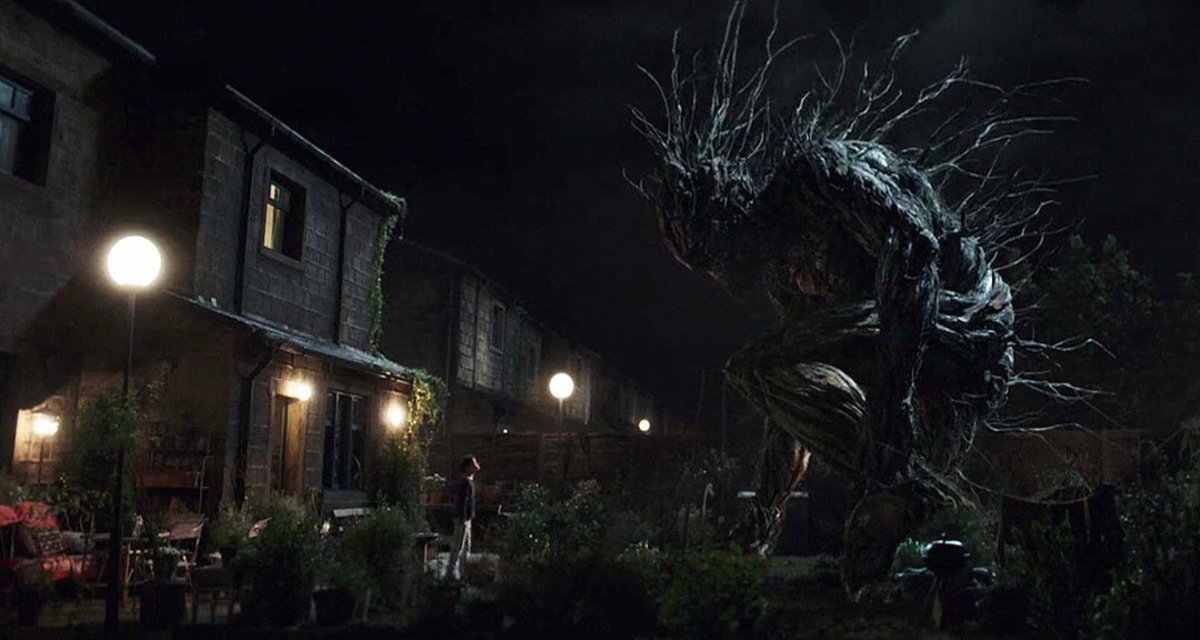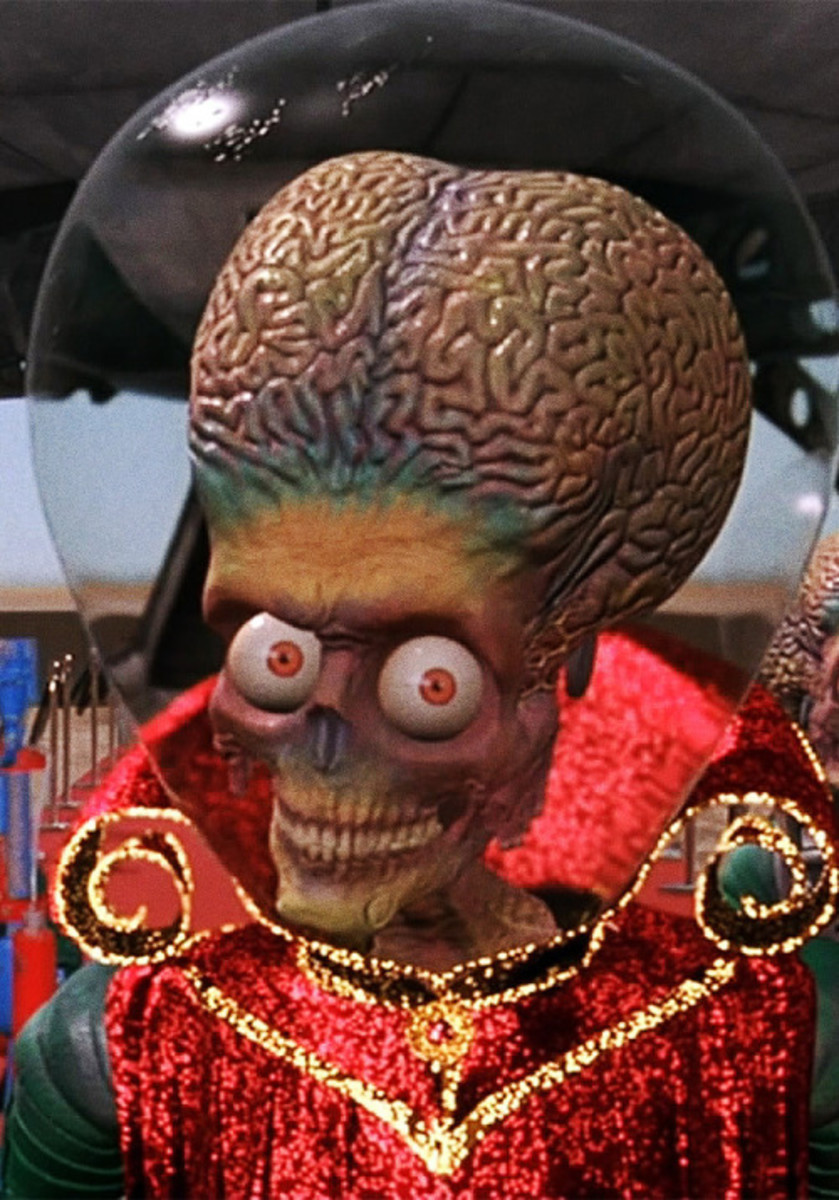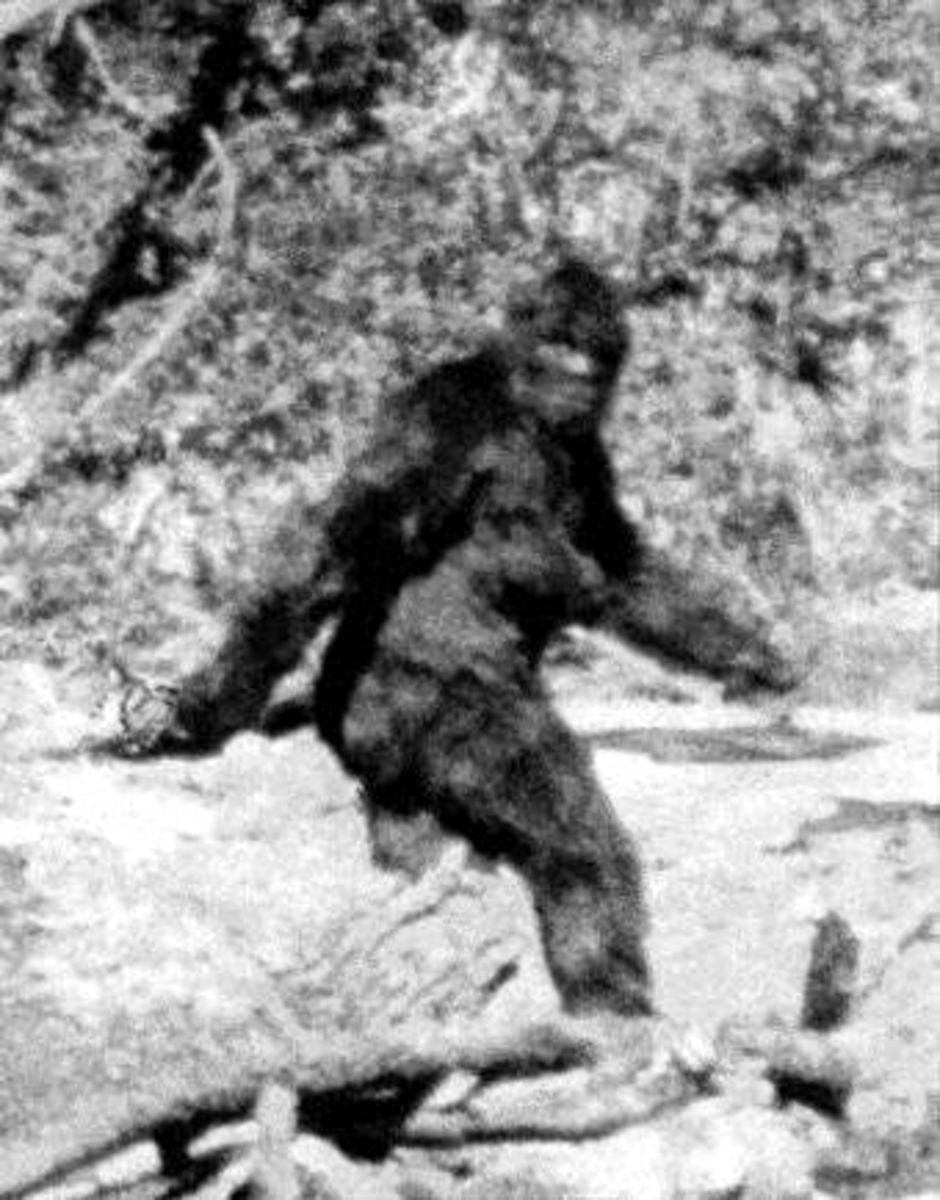Kaiju Classics - The Giant Behemoth (1959) Review

Following soon after the success of 1953's "The Beast from 20,000 Fathoms", a new wave of science fiction movies, featuring monsters born from or released by atomic tests, began to emerge. While a large number of the films that followed would only follow the general premise of this classic, "Giant monster awakened by atomic tests and begins to threaten mankind", others would seek to duplicate the success of the film by actually duplicating the film.
Such is the case with the 1959 movie, "Behemoth, the Sea Monster", otherwise known as "The Giant Behemoth".
The Giant Behemoth Theatrical Trailer
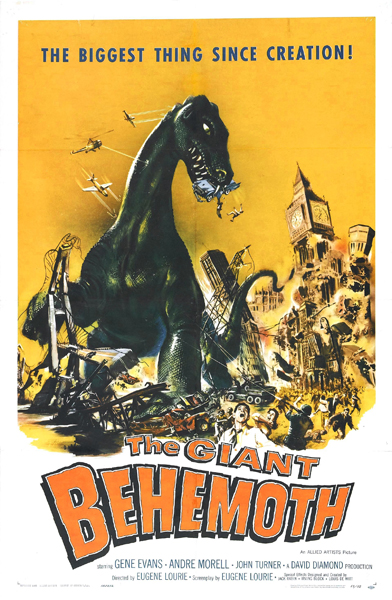
The Backstory
The Giant Behemoth, known as "Behemoth, the Sea Monster" in its original British release, was an American-British co-production produced by Artistes Alliance Ltd. and Diamond Pictures Corp. and distributed by Allied Artists Pictures and Eros Films. Directed by Eugène Lourié and Douglas Hickox, the film was originally intended to feature a giant, formless blob of radioactive material, but this idea was scrapped when the film distributors insisted that the film should closely resemble "The Beast from 20,000 Fathoms". As such, the blob was changed to a dinosaur stirred from its slumber by atomic tests, though elements of this previous idea, such as pieces of gelatinous material appearing on shore and the dinosaur's ability to project rays of radiation, were kept.
Due to the success of the film King Kong and his availability at the time that the film was being made, Eugène Lourié suggested contacting famed stop-motion animator Willis O'Brien for him to do the special effects. However, the producers felt that hiring O'Brien would be too expensive on the budget they had to work with, so the effects were contracted to Jack Rabin, who had worked uncredited for several science fiction films of the 1950s, such as "Kronos" and "The Man from Planet X". In a strange bit of luck, Rabin sub-contracted the work to O'Brien anyhow, who had his assistant, Pete Peterson, handle most of the actual effects.
The Cast of The Giant Behemoth
Doctor Steve Karnes - Gene Evans
Professor James Bickford - André Morell
John - John Turner
Jean Trevethan - Leigh Madison
Dr. Sampson - Jack MacGowran
Tom Trevethan - Henri Vidon
The Plot
Following footage of an atomic bomb explosion, Dr. Steve Karnes, a noted scientist in the field of marine biology, begins addressing Professor James Bickford and several other scientists of the dangers of atomic testing on the world's ecosystem. Having been attached to the Bikini Atoll tests in the Pacific, he establishes evidence of the chain reaction of radioactivity levels in plants and animals of that region, and poses that further atomic tests could have devastating effects. He also comments on the danger that this may have in awakening the mysteries of the oceans, and how such tests might have created something just waiting to strike back at mankind.
Meanwhile, along the coastline of a fishing village of Looe, in the county of Cornwall, a fisherman, Tom Trevethan, and his daughter, Jean, are slowly making their way back to shore. As Jean heads back to their house to prepare dinner, Tom stays behind and begins to sort the fish caught that day, when a brilliant light from the sea strikes him, causing him to yell out in pain while covering his face with his hands.
Later, Jean, wondering why her father was late, heads to the village pub to see if he was there bragging about a whitefish he had caught. Coming up to one of the other fisherman, a young man named John, she asks him if he had seen Tom, who replied that he hadn't since that morning, and that there's no way that anyone would have missed him if he had came through with a whitefish. Seeing the worried look on her face, John suggests they go back down to the cove to look for him.
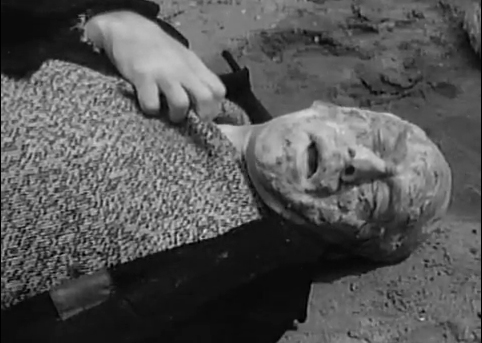
As they make their way across the shore, the two come across Tom lying on the ground, barely conscious with burns all across his face. As John and Jean kneel down beside him, begging him to tell them what happened, Tom, before passing away, is able to utter a few words to them.
"From the sea...burning...like fire...Behemoth!"
Following her father's funeral, Jean feels uncomfortable with returning home, so she and John decide to take a walk along the coast. Soon after they arrive, they find the shore littered with thousands of dead fish that have washed up, causing Jean to want to leave. John, however, notices a pulsating, undefinable mass caught along the rocks and reaches down to touch it, burning his hand on it in the process.
Back in London, Karnes, waiting for news on the arrival of his plane tickets back to the United States, watches a news report on Cornwall regarding the fishing industry in the village coming to a complete standstill as a result of the unexplained death of all the fish that washed up on shore, as well as a report of a sea monster being sighted nearby, though the report was quickly dismissed by the newscaster. Karnes quickly cancels the plane tickets and gets in touch with Prof. Bickford.
The two meet later in Bickford's office, where the professor informs Karnes that there was more in the report from Cornwall than what was made public, primarily Tom's death. After hearing about the burns on his body, Karnes comments that the symptoms of Tom's death sound like what happened in Hiroshima, though Bickford replies that any number of acids could have caused the burns, and that a passing ship might have dropped something into the water, which would explain the dead fish. Karnes, not convinced, tells Bickford that he wants to go to Looe to investigate.
The next day, Karnes and Bickford arrive in Looe, where they meet with John and several other fishermen, all of whom are upset over not being able to provide for their families as a result of the fish crisis as well as what happened to Tom. One of the fishermen mentions that he saw cloudy lights underneath the water, and then John volunteers to take Karnes and Bickford up to the village doctor's for his take on what killed Tom.
The doctor tells them that he doesn't believe that it was an allergic reaction that caused the burns, but that it could have been some kind of poisoning along with an acute allergic reaction, then recalls that John's hand had developed similar burns to those found on Tom. Looking on as the doctor cuts away the bandages on John's hand to reveal the burns, Karnes tells Bickford that it's just like the tests in the Pacific. John volunteers to take them down to the cove where he found the pulsating mass.
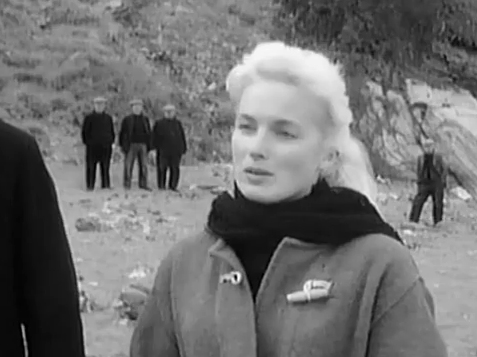
The two scientists begin to do an extensive search for radiation along the shore, but Geiger readings are coming up negligible, even in the area where John found the mass. Karnes then asks Jean if her father was conscious at the time that they found him, and if he said anything, to which she responded with the message about the behemoth that he had uttered.
Karnes is still uncertain as to what was responsible for Tom's death, though is certain that this "behemoth" has something to do with it and that radiation was the cause of the burns, so he asks for Bickford to send for plant and animal samples along a large portion of the coastline for analysis.
Specimens from seventy-two coastal stations are brought in, and various methods to test for radiation are implemented, though tests so far as come up with nothing. Karnes then employs a method of x-raying fish by using any latent radiation in their tissue to cause the plates used for the fish to expose themselves. After all the plates are prepared and the first few are finished developing, it is revealed that one of the plates was exposed to an external light source and, after dousing the lights, the source is revealed to be glowing material from one of the fish samples.
As the plate for that fish sample is brought in, the clearly defined x-ray makes it clear that the fish is highly radioactive. Karnes immediately insists that he must go to Plymouth, the location where the fish was retrieved, and track down the source of the radiation, whatever it may be.
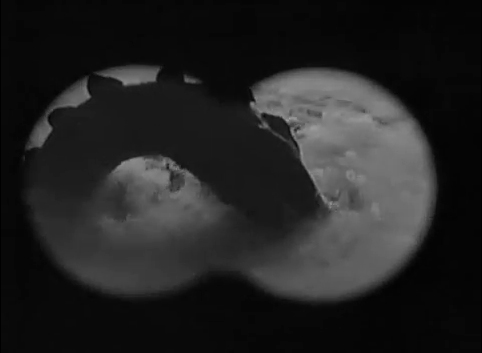
Later, Dr. Karnes is out on the fishing boat "Molly Tee", scouting out the area near Plymouth were the fish was brought up. As he and the boat's captain discuss what it is that Karnes is looking for, a harbor report comes through across the radio that the steam ship Valkaria has gone missing, and that any news about it should be reported in immediately. Just then, the Geiger counter begins to pick up radiation, and the captain points out towards something he sees ahead of them. Looking through a pair of binoculars, Karnes sees a serpent-like head and neck arching from the surface of the water, and the two give chance after it.
However, the creature proves to be too fast for them as it manages to outrun the vessel, even at top speed. Karnes suggests that they circle around awhile, but the Coast Guard contacts the boat, instructing it to bring Karnes back in because he's needed ashore. Arriving on shore, he is greeted by a military officer, who informs him that the Valkaria was found beached, and that Prof. Bickford had called for him to be brought to the wreck.
Upon arrival, he finds the Valkaria decimated, with signs of tremendous impacts against the hull of the ship and the entire crew dead from radiation exposure. Returning to London, he meets with Bickford and a military commander and tells them that he believes that the ship was run around by a giant creature of tremendous strength. Bickford confirms Karnes theory, and the military commander decides that there's no alternative but to prepare to find and destroy the creature.
Later, as a family in the countryside is sitting down for dinner, their dog, tied to a leash, begins to bark incessantly, causing the father and the son to go out to investigate. As the three go looking for what the dog was barking at, they suddenly come across something that the father fires his shotgun at, but to no avail. A stream of pulsating energy begins surging across the father and son, bathing them in a blinding light that leaves their bodies scorched beyond recognition.
That night, the police arrive to Prof. Bickford's house and delivers photographs to him and Dr. Karnes of the creature's attack on the farmhouse earlier. The first photo shows a patrol car parked alongside a gigantic footprint several times the vehicle's size, whereas the others show the farmer's remains and the devastated farmhouse. Concluding that the footprint belongs to some kind of dinosaur, the two decide to contact Dr. Sampson, paleontologist and curator of London's Natural History Museum.
Arriving at the museum, Prof. Bickford shows Dr. Sampson the photo, who concludes that the footprint was made by a member of the "Paleosaurus" family, and tells them that he'll tell his assistant to send a class there in the morning to investigate it. The paleontologist is overwhelmed with excitement though when Prof. Bickford informs him that the creature is alive and has been spotted along the Essex coast. Sampson indicates that it must be making its way to the Thames, since all members of its family would head to those fresh waters when it came time to die. He also relates to them his boyhood belief that dinosaurs still existed to this day, but then warns them that the Paleosaurus is capable of generating electricity like an eel can, which explains all the glowing lights reported with the creature. The happiness in Sampson's voice fades when Karnes informs him of the creature's radioactivity, as he realizes that it must be destroyed.
All coastal nations of Europe are alerted to the existence of the Paleosaurus and the Thames estuary is under close surveillance by radar and naval vessels. Meanwhile, Dr. Sampson and a few colleagues are out over the ocean near the Thames in a helicopter, watching for any signs of the dinosaur. After several minutes of patrolling the area, the pilot and Sampson spot a glowing silhouette of the monster underneath the surface of the water, and the pilot quickly relays the message in before taking the helicopter down to investigate further.
However, despite being able to pick up the helicopter clearly, radar is unable to detect the Paleosaurus underneath the surface, leading Karnes to surmise that somehow it is capable of evading detection from radar.
As they continue to fly over the area, the helicopter is quickly bathed in the blinding light of the monster's radioactivity, causing it to explode in a ball of fire. Having lost contact with the copter, naval command quickly diverts all planes and ships out on patrol to its last known location to investigate further.
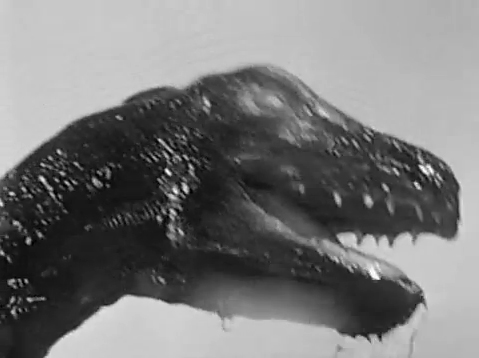
A ferry, loaded with passengers and vehicles, begins to set off across to the other side of the Thames, when the Paleosaurus suddenly surfaces nearby it. The ferry captain quickly tries to turn the ship back around towards dock, but the creature begins to ram into it repeatedly with its head in an attempt to capsize it. After a few attempts, the monster eventually manages to flip the vessel over, throwing all the passengers into the river and killing them due to the radiation exposure.
Police, armed forces, and ministry heads are called in for conferences on plans for the monster while the general public are alerted that the embankments of the Thames are extremely dangerous and should be avoided at all cost. In the meantime, troops and artillery units are dispatched into several areas of London, in preparation for the resurfacing of the Paleosaurus.
At the conference, one of the military advisers suggests using bombs to destroy the monster, as they can be delivered from helicopters with great precision, but Prof. Bickford warns him that blowing the dinosaur apart can't be the solution, since each piece would be highly radioactive, and sending thousands of pieces across London would result in the entire city being hazardous to human life. Karnes theorizes that due to its radioactivity, the Paleosaurus is burning itself out, and Bickford suggests killing it by introducing more radioactive material into it that it accelerates its own death. With an anti-tank shell out of the question as the delivery mechanism, Karnes suggests fitting a tip of radium to the head of a torpedo instead.
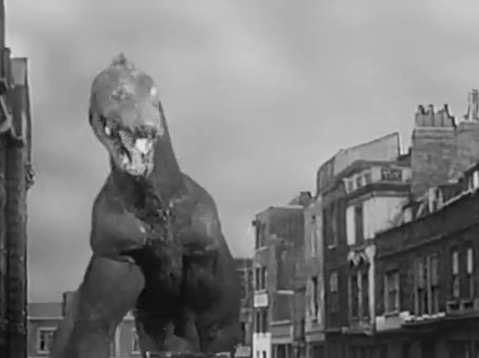
It isn't long before the Paleosaurus resurfaces, and it quickly makes its way onto land. As London's civilians flee from the slowly moving monstrosity as it makes its way through the streets, soldiers arrive to try to do battle with the beast. However, despite pummeling the dinosaur with ammunition, military forces quickly fall to its deadly bursts of radiation as it continues further into the city.
As night falls on London, the monster continues on with its rampage, destroying power lines and oil refineries along the shore before returning to waters of the Thames. Meanwhile, Prof. Bickford is overseeing the construction of the radium tip for the torpedo to be used to destroy the Paleosaurus.
The torpedo is completed, and a mini-submarine is brought in, fitted with a special receiver to pinpoint radioactivity underwater. Dr. Karnes and the submarine pilot quickly descend into the waters of the Thames. As the two quickly come up on the creature, it begins to buffet the small craft with its bursts of radioactivity, though the vessel is able to maintain intact despite taking considerable damage from the attack. Waiting for the exact moment in his readings, Karnes instructs the submarine pilot to fire the torpedo, which quickly streams forward into the dinosaur's mouth before exploding.
The monster surfaces briefly, shrieking in agony, before sinking back into the water.
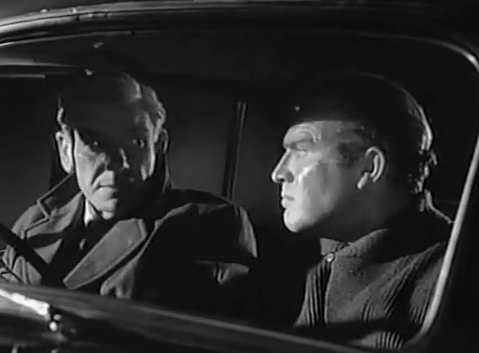
As the submarine surfaces and returns to the shore, Karnes and Bickford prepare to leave when a news broadcast over the car radio reports of thousands of dead fish washing up along the eastern coast of the United States, causing the two scientists to look at one another grimly.
The nightmare that they just battled against is starting all over again.
The Effects and Music
Despite being made several years after "The Beast from 20,000 Fathoms", the special effects and stop-motion animation for "The Giant Behemoth" aren't quite up to par with its predecessor. While the Paleosaurus design itself is fairly solid, the execution of its movements on camera are rather lacking. For the scenes involving it surfacing from the water, a solid, non-moving model of the creature's head and neck were used, so whenever it would surface, there was no actual movement of the head and neck. In addition, because it is just a head and neck, there are times, especially during the Paleosaurus's attack on the ferry, that you can actually see the base and supports for the model at times when it surfaces higher than it should.
When it came to the actual stop-motion effects for the monster, such as when it is roaming through London, the effects are a bit better, but they still fall short of Harryhausen's Rhedosaurus from "The Beast from 20,000 Fathoms". The Rhedosaurus's movements were very smooth and natural, with every muscle in the body moving as the creature moved. With the Paleosaurus, the movement was a good deal jerkier, and as a whole the monster seemed stiff. I can understand and accept this to an extent, since Pete Peterson suffered from multiple sclerosis while he was doing the effects, but with so many others involved with the effects, both directly and indirectly, I feel that the monster could have been handled better.
The radioactive wave that the Paleosaurus emitted was a nice concept, but again fell short. The effect, which basically was an outward expanding series of energy circles accompanied by a pulsating whine, worked when the monster was in the center of the energy circles and it appeared they were radiating outward from it, but there were several scenes where it was clear that the effect was laid over the rest of the footage, so there were a number of times when the energy circles were emanating from nothing. I know it's not a major issue, but it still tends to be distracting.
The music is very stock, being extremely reminiscent to, if not totally taken from, several other science fiction and horror movies of that decade. A number of film studios of the time tended to recycle their themes rather than compose new music for each film and then recycle it from time to time. While the music is not terrible, it doesn't really add or convey much when there's a lack of originality to it.
Final Thoughts
With the plot so closely based on "The Beast from 20,000 Fathoms", it's practically impossible not to compare this to that film, and unfortunately, this one just doesn't hold up as well. By this time, the premise was not an original one by any means, so execution was what mattered the most, and there were faults with this one that cannot be ignored. The Paleosaurus and the effects weren't as appealing as Harryhausen's work from The Beast, and as a whole, everything on the effects side just felt a bit cheaper.
However, while the effects and the monster faltered, the human element was extremely strong, especially for a film of this genre and time period, primarily because the characters didn't fall on clichés as would be expected normally. The hero, Steve Karnes, isn't a dashing rogue who falls in love with a woman during the course of the movie, but is a dedicated scientist of his field working to better mankind. The approaches that he and the other scientists take during the film are what one would expect scientists in the real world (though in the 1950s of course) to take when analyzing radiation and determining the source.
Besides their behavior being rooted in reality, I personally just found the characters to be very likeable and believable. Gene Evans as Steve Karnes is a very convincing performance, as he conveys the notion that he's an expert in his field very well, while still showing that he doesn't know it all, as tends to be the case with most "scientists" that appear in this genre. André Morell's performance as Professor Bickford is subtle, but effective, as you can tell easily that he's a seasoned and well-traveled scientist that, while wise and a bit arrogant about what he feels he "knows", isn't beyond accepting that there is more out there than what he's already seen. Lastly would be Jack MacGowran's performance as the paleontologist, Dr. Sampson. Even before he spoke about his belief that dinosaurs somehow existed, once Dr. Karnes told him about the living Paleosaurus, you could see in his eyes and hear in his voice an almost child-like level of awe that he was experiencing. Every actor that appears in the movie, regardless of their role, felt very authentic, and stands well against the flat, one-dimension characters that appear in other science fiction films of the time.
I can't highly recommend this movie, because a number of the elements in the movie are sorely lacking, and in general it's simply a loosely veiled copy of "The Beast from 20,000 Fathoms". What does work in the film, the human element, works very well, but what doesn't work, everything else, holds it back from being an extremely good movie. It's not terrible by any means, but when you look at what it tried to copy, you can see that it was just a little low on ink.



